AQUALUNG

Bill Dunn, AKA
Aqualung was a fixture in Charleston for many years. He was a
"street person", a man that back in my day would have been called a
bum. But Bill was no bum. He lived on the streets and asked no
one for anything. He never bothered anyone, and actually only
wanted to be left alone. If Bill had an issue at all, it was that he
smelled so bad that if you walked in the local library hours after he
left, you would know he was there. Bill also ate from trash cans. If
you left half a sandwich or part of a drink, Bill was happy to grab
it. So many rumors surrounded Bill that he became a local
legend. He was "supposedly' a lawyer, a very intelligent man who
had simply dropped out of society. I remember looking over his
shoulder at Shoney's one time and watched as he scribbled furiously in
a small notebook. It appeared to be some sort of code, with
symbols I had never seen before. Was it gibberish or some sort of
shorthand that only Bill knew? He was studied for the hit movie
"Down and Out in Beverly Hills" by Nick Nolte, one of the stars of the
movie and who's wife at the time was from Charleston. Word around town
was that someone (possibly Nolte) had set up a small bank account for
Bill, who supposedly received residuals from the movie. Bill was
also instrumental in helping solve a murder case in Charleston when he
found evidence in a dumpster and turned it into police. Few knew Bill's
name for a long time, and because he resembled the guy on the cover of
Jethro Tull's album "Aqualung", that was the name most people
knew him by. Bill loved baseball, but other than that, few know what
made him happy other than being left alone.
BELOW ARE PHOTOGRAPHS THAT I PERSONALLY TOOK OF BILL DUNN
|
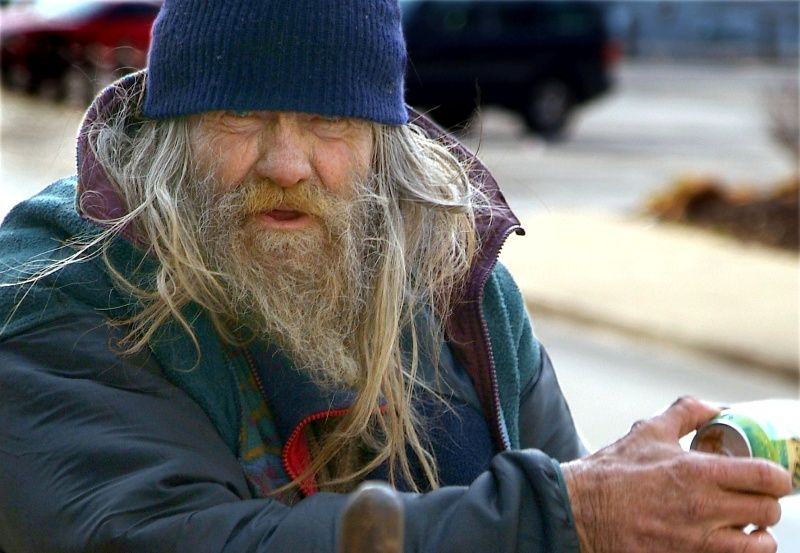
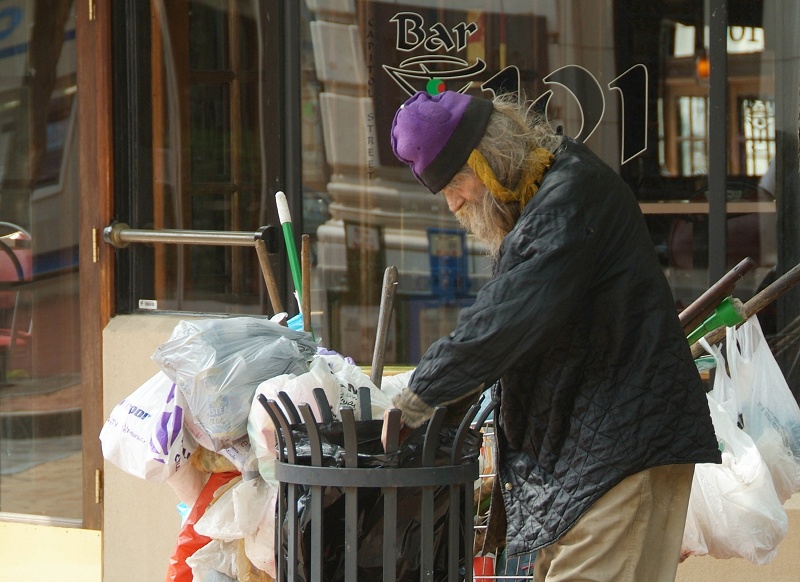
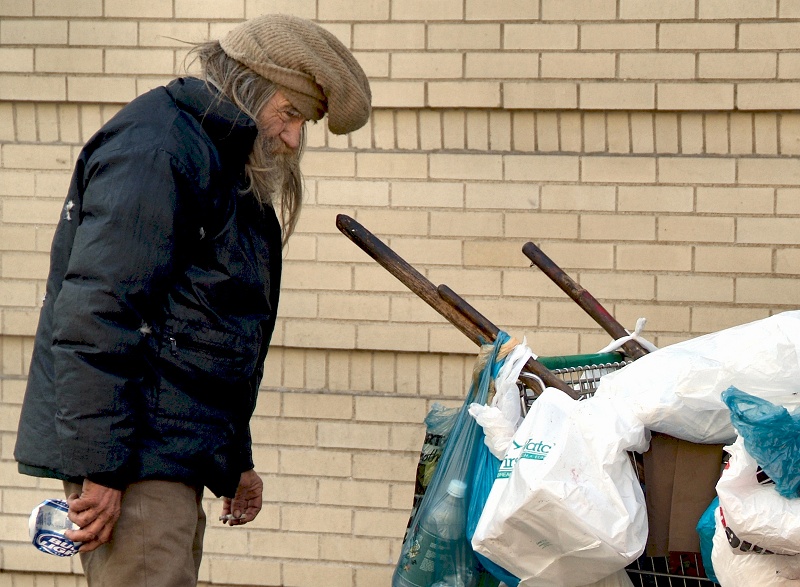
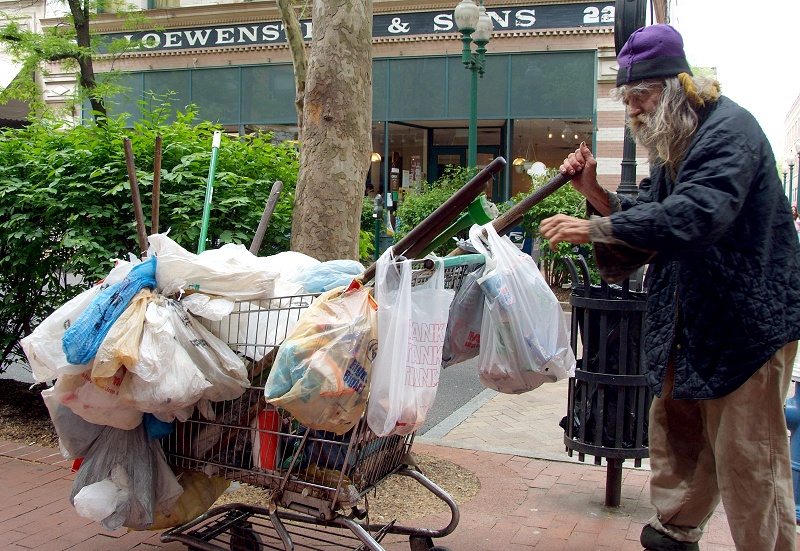
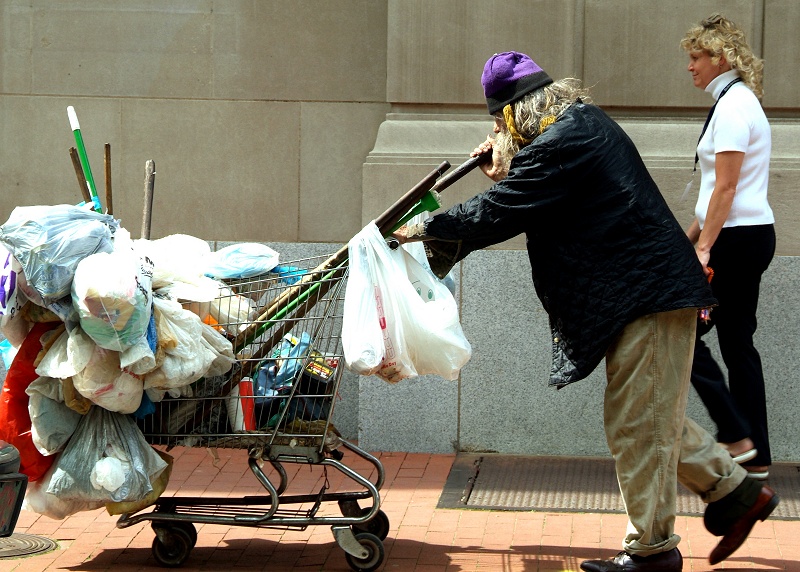
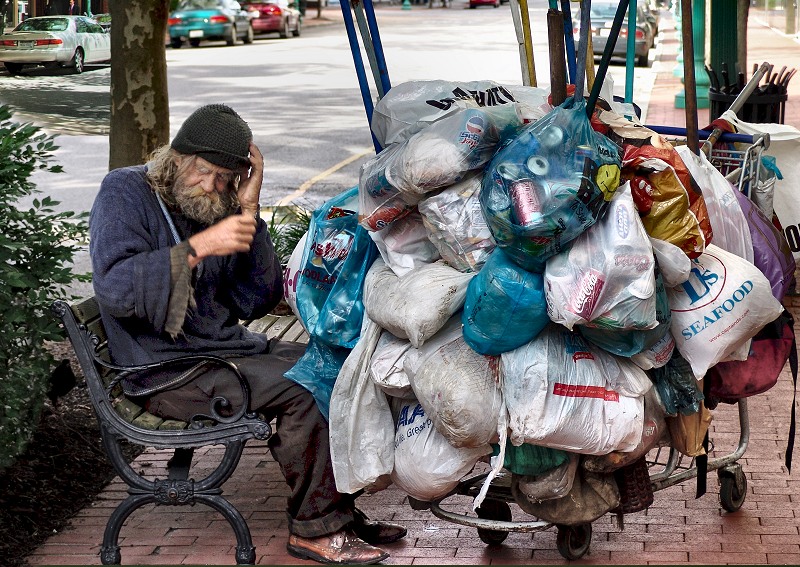
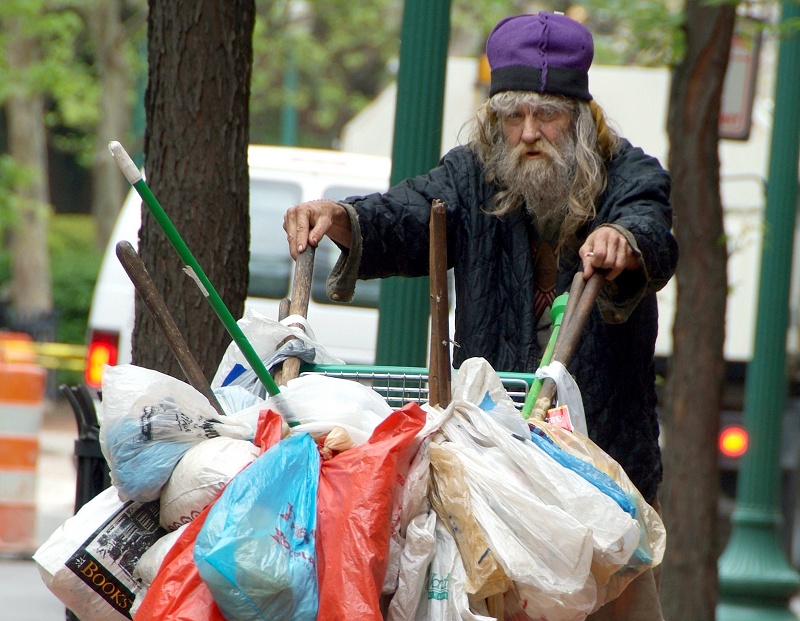
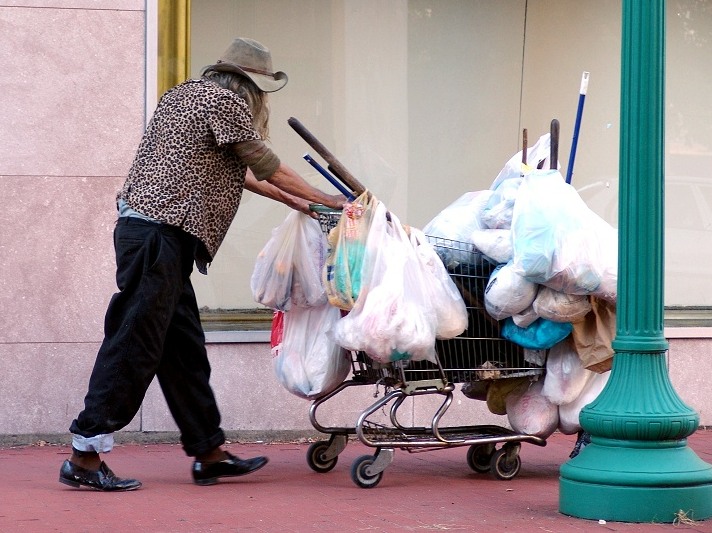
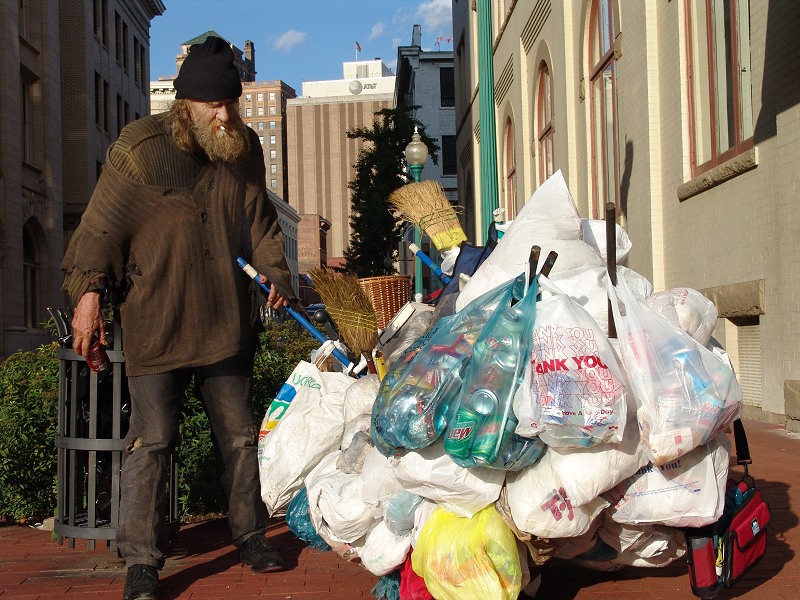
Epilogue
Tuesday January 15, 2008
Aqualung still missing
by Kris Wise
Daily Mail staff
Bill Dunn has been a fixture on Charleston’s streets since at least
1974. While he’s been a subject of fascination for many people, not
much is known about his past...
Origin of Aqualung
People who live or work in Charleston got very used to seeing Dunn
rolling his shopping cart through the streets, sifting through
Dumpsters or just sitting somewhere, observing the world.
He's been part of the city's landscape since at least 1974, according
to newspaper stories chronicling his activities, but not a great deal
is known about his background.
Rumors abound. The stories cite people who say they heard he was a
federal agent who had a breakdown and wound up homeless with no
identity. Some say he was a high-powered attorney whose wife left him.
Heartbroken, he couldn't go on, eventually losing his job and winding
up penniless and alone.
The mystique surrounding him only heightened in 1978, when he helped
police solve a murder. After a local nightclub dancer was found dead,
Dunn found evidence in a Dumpster and handed it over to officers.
The Aqualung nickname was bestowed on him sometime in the 1970s by
announcer Benji Hardman at Watt Powell Park. An avid baseball fan, Dunn
would linger around the ballpark, trying to watch Charleston Charlies
games through the fence. Hardman pointed him out over the intercom one
night and said he looked just like the seedy-looking character on the
cover of Jethro Tull's 1971 album "Aqualung."
"We didn't really have any feelings about that name one way or another
at first, but after we got to know him, we (researched) it and found
out what Aqualung really meant, what that song was about," contractor Carl "C.F." Agsten Jr said.
It's undeniable many people in Charleston feel a strong connection to
Dunn. It's hard to say why. There are dozens if not hundreds of others
who spend their lives on the city's streets. But Dunn is the only one
who inspires citywide - even nationwide - searches when he decides to
change his routine.
People who've lived in Charleston all their lives and those who've
moved away think of him as a symbol of the city. There's the Capitol
dome, the Boulevard, the old Sunrise mansion and the image of Dunn
pushing his shopping cart.
For the most part, Dunn has kept to himself.
The Cart
It looked like a grocery cart piled high with junk.
Dunn would typically push the thing over the alleys and sidewalks by
holding on to one or two of the many broom handles that jutted out from
a mountain of overstuffed plastic bags.
"It went with him everywhere," C.F. said.
The cart was kept indoors at night, but Dunn continued to take it out each day as he meandered through the streets.
The cart held Dunn's books, magazines and newspapers. He was a voracious reader.
"And he had a lot of clothes," C.F. said. "And a lot of food, perishable food.
"To this day, I don't know how he kept from getting sick," C.F. said.
"It wouldn't be unusual for him to salvage meat somebody had thrown
away, things that hadn't been cooked but were still good. He seemed to
know when it was good to eat and when it wasn't."
He was less keen on letting people help him with his appearance.
C.F. said it was a huge step when Dunn started letting them buy him new
clothes, but he would wear them only on top of his regular street gear.
"I really think it started as a defensive mechanism," C.F. said. "If
you don't want people to get too close to you, you can take care of
that pretty easily (with your appearance)."
Getting closer
C.F. said Dunn is smart, well versed in current events and a witty conversationalist.
He's also somewhat of a jokester.
"He has a big-time sense of humor," C.F. said. "He's always cracking
jokes, and he laughed all the time. Part of it was a nervous kind of
laugh, but also he just found so many things funny."
And he's obsessed with sports: reading about them, talking about them, watching them.
"We took him to a couple of West Virginia Power Games, but the problem
there was he wouldn't abide by the no-smoking rules," C.F. said.
"Smoking and drinking coffee were his two vices, his only two vices as
far as I know," he said. "He never drank alcohol, to my knowledge. He
would sometimes find it and bring it home, but it was funny because he
would never do anything with it. It would always just sit there."
Dunn's true age has been a great source of speculation for many Charlestonians.
He once told police he was born Oct. 20, 1940. That would making him 67 now.
C.F. doesn't think he's nearly that old.
"When you get up close, his face looks so much younger," he said. "And he's so strong. He's stronger than I am."
He always referred to himself as "we."
C.F won't say if Dunn's peculiar way of speaking was a sign of some deeper problems.
"I won't make a diagnosis," he said. "It's not that simple. He definitely had issues.
"He was very concerned about his well being," he said. "But part of that was just being smart."
C.F. surmised that Dunn was raised somewhere in the Northeast and was educated, but probably not college-educated.
He never talked too much about his past. He mentioned having a mother
and an aunt, but gave no details about where they lived or where he
grew up, C.F. said.
"He never gave us names or places," he said.
What about the talk of Dunn being an undercover operative or an attorney in another life?
"I don't think any of that is true," C.F. said, laughing.
But Dunn was well traveled.
He had picked oranges in Florida, spent time in the Midwest and was very familiar with cities all up and down the East Coast.
"When I went on a road trip, I'd tell him where I was going and he'd give me three or four ways to get there," C.F. said.
A lot of the information his friends had about his past came from other
people, people who'd been watching him from afar over the years.
C.F. said, "We have a good friend who's been in Charleston for a long
time who remembers him going to the post office regularly as a young
man and getting packages from his family. Over time, he broke those
ties."
C.F. said he once got Dunn to talk about how he came to be on the streets of the capital.
"He said he had first stayed in the Roosevelt Hotel (in downtown
Charleston), which was like the Holley Hotel in that you could rent it
by the week. For one reason or another, he lost that room and that was
it. He said he'd been on the streets ever since."
If there was any word to describe Dunn, it was "private."
Then he was gone
Other folks who knew Dunn - they either saved aluminum cans for him,
chatted with him or kept track of his meanderings - got used to not
seeing him for long stretches of time.
He would disappear occasionally. Usually, it was during the winter when he'd make his way for Florida.
In 1985, he went missing for about five months and then showed up in May after a winter spent in a Washington, D.C. warehouse.
In 1995, he apparently took his cart on a 125-mile trip north. After
being gone from Charleston for about a month authorities tracked him
down in Tyler County, where he had been picked up for allegedly
brandishing a knife. The charge was dismissed, but Dunn was ordered to
undergo an evaluation at a state mental hospital, which he described to
a reporter as having "beautiful" accommodations.
So when he went missing in the summer of 2006, most people expected him to show up at any time, when he was good and ready.
But then weeks turned into months, and then the months dragged on.
"I haven't seen him at all, and that's very odd," Kim Pauley, director of the Charleston Ballet, said recently.
Dunn would hang out a lot in the alley behind the ballet's downtown
studio. Pauley would save aluminum cans for him, and contacted police
last summer when she realized it had been a long time since she'd seen
him.
"By now, several people have asked me, wanting to know where he is,
what's going on," Pauley said. "I would love to know what happened to
him."
Karen Pauley has worked at Taylor Books for years.
The staff there was also quite familiar with Dunn. Capitol Street was
one of his familiar haunts, and he'd frequently stop at the bookstore
and coffee shop.
"We haven't heard anything from him or about him," Karen said. "It's
been since at least July of 2006. He would come in and get a coffee,
and we'd see him walking by all the time. And then he was just gone."
C.F. said that since he'd met Dunn, he hadn't taken off.
C.F. also got news from a friend that made him think he wouldn't be seeing Dunn any time soon.
Tegan Easterday, manager of Schwabe-May, kept an eye on Dunn when she ran The Dresser, once located beneath Taylor Books.
"I was used to just seeing him around all the time, watching him walk by," Easterday said.
She was familiar enough with Dunn's habits that she got worried one day
that summer when she saw him walking along the road near her home, not
far from Kanawha Turnpike and Jefferson Road.
"It was so unusual, because he's never in South Charleston," Easterday
said. "I called a worker at the bookstore, and I asked if he was OK. He
had his big hat on and everything, and he just seemed different.
"That was August of 2006, and as far as I know, no one has seen him
since then," Easterday said. "I feel like I'm the last person who saw
him. That's what was so weird."
It was earlier in the summer of 2006 that something else had happened,
something Dunn's friends say might have helped spur his departure.
Artist Rob Cleland unveiled a series of artworks featuring Dunn -
watercolors and photographs that were part of a series called
"Charleston Icons." Newspapers carried photos of the art and stories
about Dunn.
"I wonder about the issue of attention," C.F. said. "I don't know if it was too much attention, if it scared him."
C.F. said he went to Huntington, calling his contacts there and
searching the city to see if Dunn was around. He couldn't find him.
Police also have had no leads, he said.
"I feel like somebody might have a clever way to get the word out to
other cities," C.F. said. "Because cities - bigger cities - is where he
feels safe. I think that's probably where he is.
"It doesn't necessarily mean we want to go and get him. You couldn't
anyway, unless he wanted to come back. But I do worry about him,
especially as he gets older."
Even took him to the Social Security office, and not only did they have
no work record for him, but they had no record of him at all, not even
a Social Security number, C.F. said.
"I don't know what we were thinking about long-term," C.F. said. "We
had thought about trying to get a social service agency to come in, but
what we had found and what we instinctively knew was that all those
agencies would have certain rules, and he just didn't do well with
rules. He really did his own thing, and that's how it was."
|
THE MURDER CASE
(Condensed just for Dunn's part)
At approximately 9:30 p. m. on 9 September 1978 an off-duty room clerk
discovered the battered and dead body of the victim in a vacant room on
the third floor of the Worthy Hotel in Charleston. Responding to the
clerk's call, Police Officers Roy Bailey and Howard Haynes arrived to
find the partially clothed body of the deceased wrapped in a sheet and
lying partly on a bed with her legs on the floor.
On the night of 10
September 1978, officers Bailey and Haynes, while working the same
shift and beat as they had the previous evening, were approached by a
street character named Bill Dunn, who was known to live by sorting
through trash cans. Dunn handed the officers a manila envelope
containing a Michigan driver's license and other identification
belonging to Diane Engman. Recognizing the photograph on the driver's
license to be that of the dead female victim the officers had found the
night before, they proceeded immediately to the trash barrels in which
Dunn had found the items. In the trash barrels they found a bloody
yellowish-gold jump suit, green and gold sequins, bloody jockey
underwear, a bloody sheet, an iron and pieces of bakelite, a hospital
identification bracelet with the name "William Hawkins" on it, a belt
buckle inscribed "Hawk" and a bloody brown and white polka dot, striped
pillowcase. This evidence was gathered by Detective Patrick Legg and
turned over to the Criminal Investigation Bureau. Blood and hair found
in and on the various items from the trash cans matched that of the
victim. The iron was quickly determined to have been the murder weapon
on the basis of the shape of the wounds on the victim's head.
Detective Harvey Bush had received a tip from a source that one William
Hawkins had information concerning the death of Diane Engman.
On 27 June 1979 the jury returned a verdict finding the appellant
guilty of murder in the first-degree with recommendation of mercy.
After polling the jury, the court had the appellant taken to the Grand
Jury room for a few moments. The court then thanked the jury for its
attention during the four-week trial and complimented the attorneys for
both sides for their excellent representation.
|
|
©
COPYRIGHT
All
content including articles and photos on this website Copyright 2013 by
J. Waters. All images on this website are used with
permission or
outright ownership of J. Waters.
All newspaper articles
are courtesy of the Charleston Gazette or Daily Mail for the express
use of the author. You do NOT have permission to use any image, article
or material without permission from the author. You do NOT have permission to pull
photos from this website and post them to Facebook or any other
website. Any
material used without permission will be subject to creative copyright
laws. |
Back To Seventies Index
|